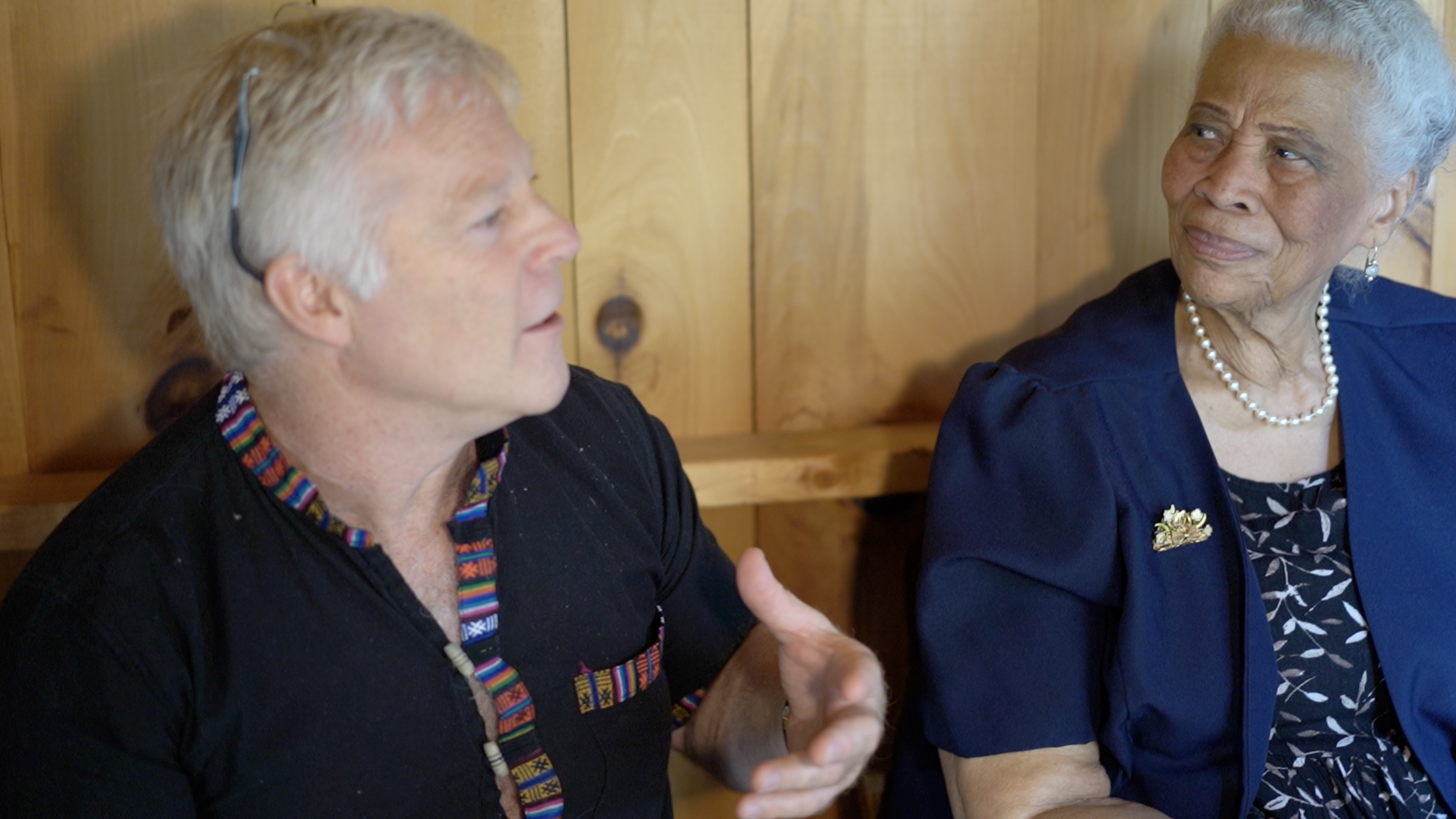 Two older adults engaging in heart-felt dialogue (photo by Jeff Klein)
Two older adults engaging in heart-felt dialogue (photo by Jeff Klein)
After many years of having Japanese tea ceremony a part of my life, I began to think of the Zen art as a time capsule of wisdom that is very much needed in our challenging times. While I have deep respect for those who carefully preserve the traditional art, very few even in Japan, are willing to learn its choreographed procedures these days (Surak, 2013). But because I felt that “tea wisdom” is so badly needed, I longed to find a way so that more could access it.
Early in my studies in Lesley University’s Mindfulness Studies program, I realized there was a serious problem with that dream – The sustained awareness needed to enact tea ceremony’s proscribed procedures is also what provides access to much of its depth.
Fortunately, I learned about Insight Dialogue, a meditative dialogue practice developed by Gregory Kramer (2007) that also sustains a high level of awareness while interacting with others. Combining elements of the two practices would take the new practice far from tea ceremony’s flowing peace, but I knew that meditative dialogue has its own important benefits. For example, it helped me encounter and release a false story that undermined bringing greater peace to my everyday life.
I was lucky to secure an internship placement at the Arlington, Massachusetts Council on Aging where I offered ongoing sessions of tea and dialogue to older adults in a six-week workshop format. My internship supervisor told me her greatest concern for the clients her agency serves was their risk of loneliness and social isolation. Someone she saw participating in various programs the agency sponsored might simply disappear, never to return. Then she would worry because she knew social isolation has been found to be as bad for health as smoking or obesity. I told her I believed tea and dialogue provides supportive connection capable of combating that harm. My master’s thesis topic had, in effect, found me.
Using a new tea and dialogue mindfulness practice to combat older adults’ risks from social isolation, given it works via video conference, seems almost too relevant now. The COVID 19 pandemic made social distancing a common practice for all age groups, and the virus particularly threatens older adults’ health. The harmful influence of ageism that I discuss in my thesis is also quite relevant. Keeping visitors away from vulnerable older adults in nursing homes makes sense to protect them, but “inspectors are likewise staying away” (Ornstein & Sanders, 2020, April 24) at a time when their oversight seems particularly important.
On the other hand, the importance of social connection for our species is gaining greater recognition. And more widespread use of video conference technology might reduce use of transportation dependent upon harmful fossil fuels.
About a year ago, I met a skilled videographer during a walk in my neighborhood. He agreed to help create videos of older adults engaging in variations of tea and dialogue practice. Starting to gather raw footage did not present a large risk. Even if the edited videos could not be used for a creative thesis as I hoped, I wanted videos to help create awareness of tea and dialogue’s benefits. Words alone cannot do the practice justice.
If I gained approval to use the videos for my thesis, having gotten an early start would take the pressure off locating participants and accommodating their schedules. We could collaborate in “trust emergence mode” taking advantage of opportunities and there would be more time for careful video editing which can be time consuming.
While it would be important for participants to feel safe to speak candidly, what is spoken might not always be appropriate for videos intended for a public audience. But since the videos would need to be edited for length in any case, giving participants the power to designate exclusions might solve that problem. I checked this idea out with Gregory Kramer who created Insight Dialogue. He agreed and seemed reassured that expert Insight Dialogue teacher, Jan Surrey, was supporting the project.
After I started locating participants, I realized that jumping into the role of producer-director put me well outside my comfort zone. But it seemed like it would be too much fun not to try. In fact, I would be engaging in the creative collaboration that I love with an amazing team, while working on something I deeply believe in that might prove of real benefit. It does not get much better than that.
As it turned out, the experience was one of vivid aliveness. The topic we explored, “the unending sea of blessings” (Wilson, 2012, p. 135), and the Insight Dialogue guidelines – Pause, Relax, Open, Attune to Emergence, Listen Deeply and Speak the Truth – supported our interaction. The mood ranged from playful to solemn but there was always deep gratitude for each other that was at times acknowledged by explicit statements of appreciation.
Since video conveys tone of voice, changing facial expressions and the meaning carried by coordinated actions, I hoped others could get a sense for the supportive connection we felt. You can judge for yourself by reviewing my March 2020 posts that provide access to the edited videos.
Like the older adults in my internship workshops, the video participants exhibited gifts for mindful communication. They shared generously and with open honesty. It was clear from their facial expressions that they really wanted to listen. And consistent with evidence that older adults can have greater sensitivity to the emotional implications of situations (Stern & Cartensen, 2000), they were sensitive, thoughtful, and kind.
Although there are many reasons to offer mindfulness practices to younger people, it is unfortunate that relatively few discover how fulfilling engaging with older adults can be. In addition to exceptional interpersonal skills, they often have considerable wisdom and compassion gained from life experience. Older adults can also be wonderful story tellers. This last ability was much in evidence during a tea and dialogue session with my mother.
The idea of bringing tea and dialogue to my 97-year-old mother came later. That seemed a great way to show the adaptability of the practice. We shared memories relating to our deep appreciation of nature, a passion we share. Afterwards, Mom told me, “That was a pure blessing.” Making mini-documentaries of tea and dialogue practice with older family members seemed a worthy undertaking in its own right. Such videos could well become family treasures while also helping to combat the invisibility that older adults often complain of due to ageism. The lingering closeness my mother and I felt from that session continued supporting us during this difficult period of social distancing and worries about the effects of COVID 19.
I was amazed at the abundance of research I could use to make a case in my thesis document for this particular application of tea and dialogue. The factors involved with the growing seriousness of social isolation for an increasing population of older adults were clear and made an interesting story. Many sound studies provided evidence of harm from social isolation, and a number of fields were providing insight into the specific mechanisms involved with that harm. From work I had already done in various classes, I knew there was evidence for the benefits of tea and dialogue’s qualities of generosity, dignity, social connection and creativity. I was also aware of research on tea and meditative dialogue. I even found studies to justify using video as it conveys nonverbal social clues important to building trust.
I hoped that the spontaneous interaction already captured in the videos would provide ample examples of the ways I argued tea and dialogue should support beneficial connection. Experience and the research evidence I had found told me that should be the case. Fortunately, my gamble worked out.
Now, I find myself humbly realizing that what I have been working on might matter even more than I thought. I hope that some wise and caring older adults are inspired to engage in and promote tea and dialogue so they can help us learn how to become better at supporting each other in these challenging times. Although we are all vulnerable, we also have great power to support each other by tapping into our fundamental interconnection.
Books referenced in this post:
Kramer, G. (2007). Insight dialogue: The interpersonal path to freedom. Shambhala.
Stern, P. C. & Cartensen, L. C. (Eds.). (2000). The aging mind; Opportunities in cognitive research. National Academy Press.
Surak, K. (2013). Making tea, making Japan: Cultural nationalism in practice. Stanford University Press.
Wilson, W. S. (2012). The one taste of truth: Zen and the art of drinking tea. Shambhala Publications.
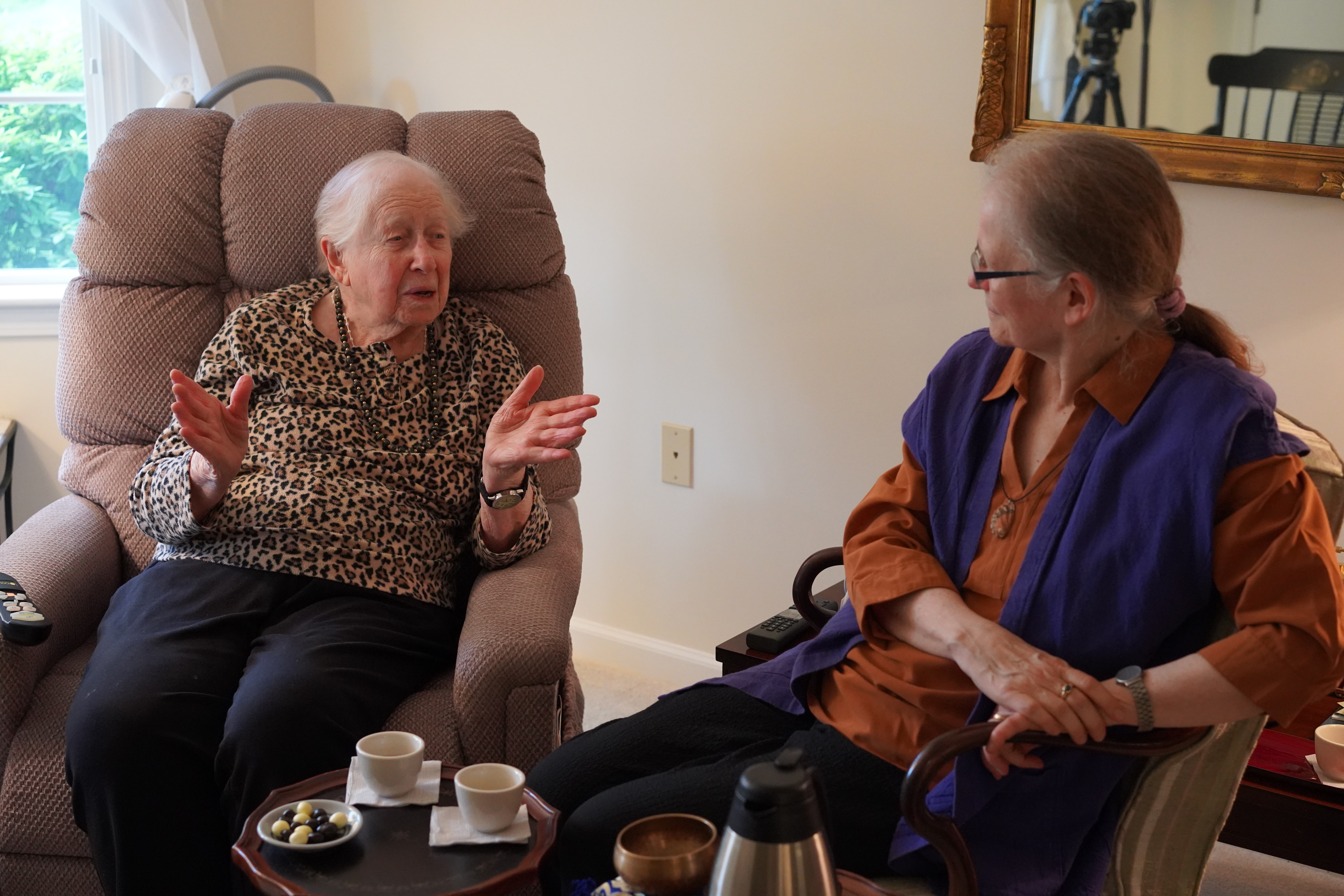
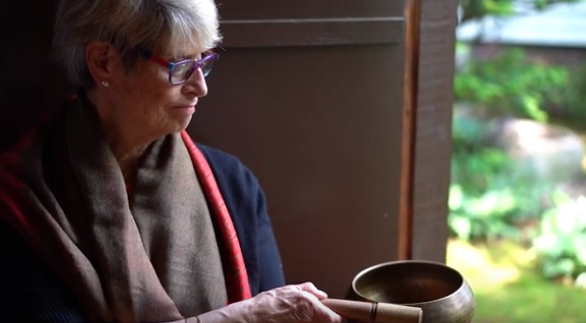
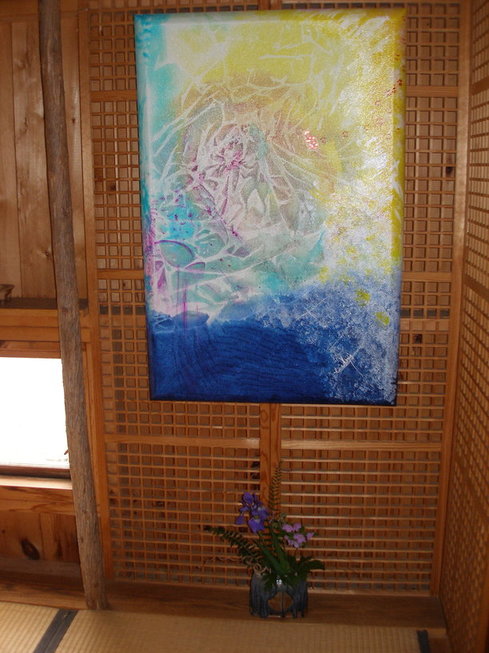
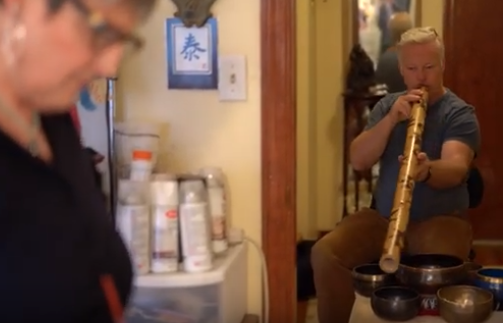
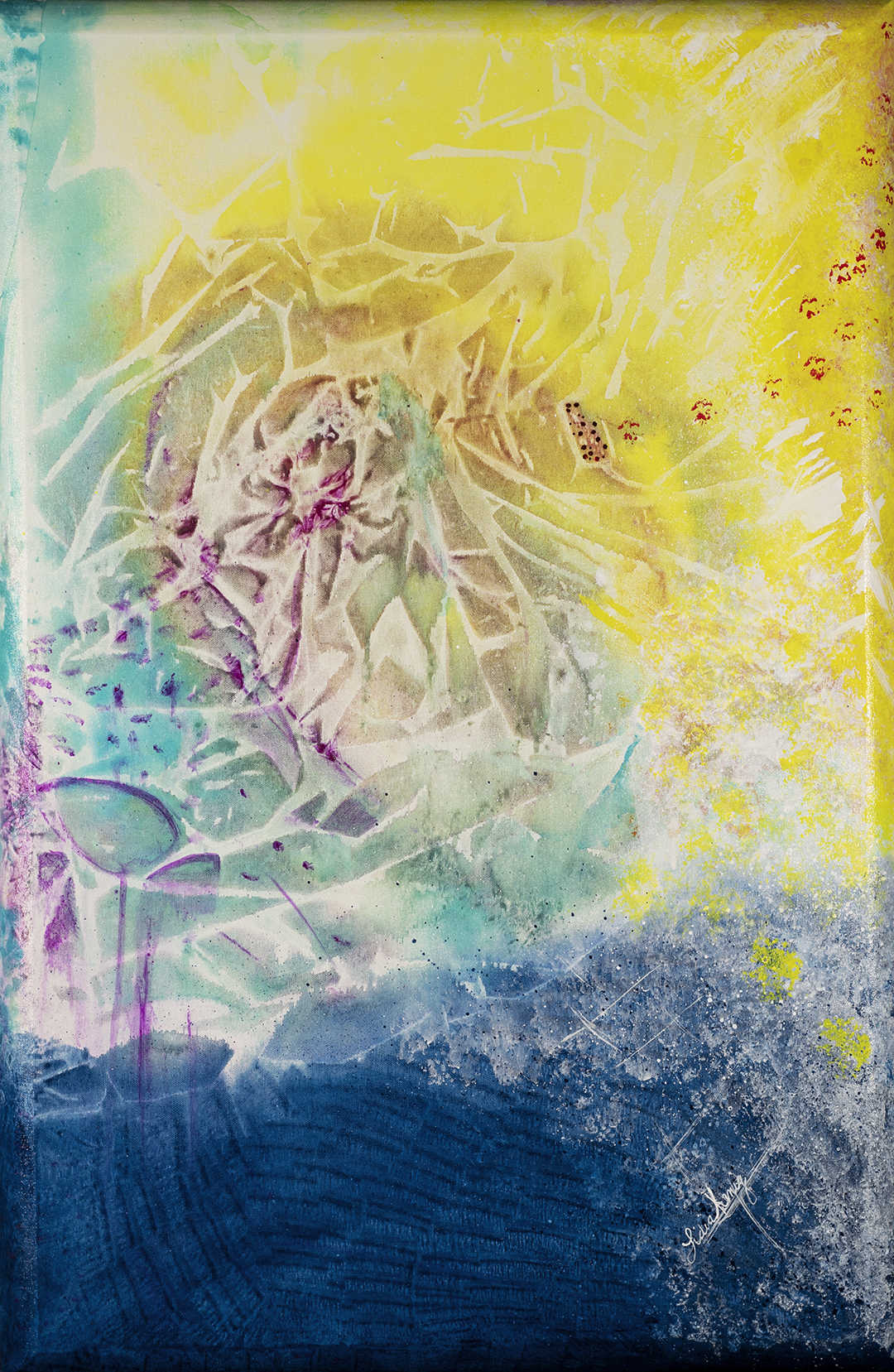 Photo of Lidia’s painting by Jean Abate, Framing & Fine Art Reproduction Specialist, Northeast Digital Imaging, Salem, NH
Photo of Lidia’s painting by Jean Abate, Framing & Fine Art Reproduction Specialist, Northeast Digital Imaging, Salem, NH